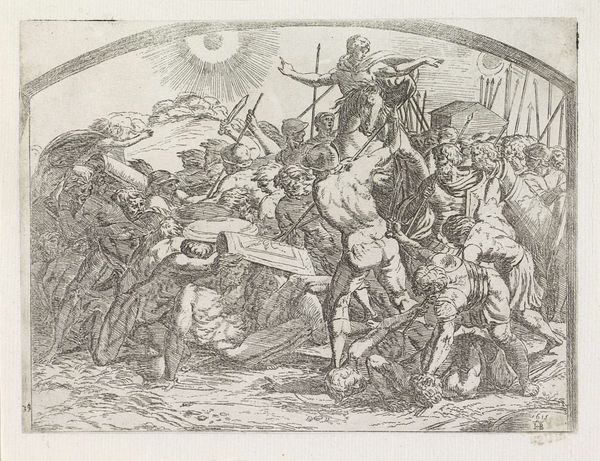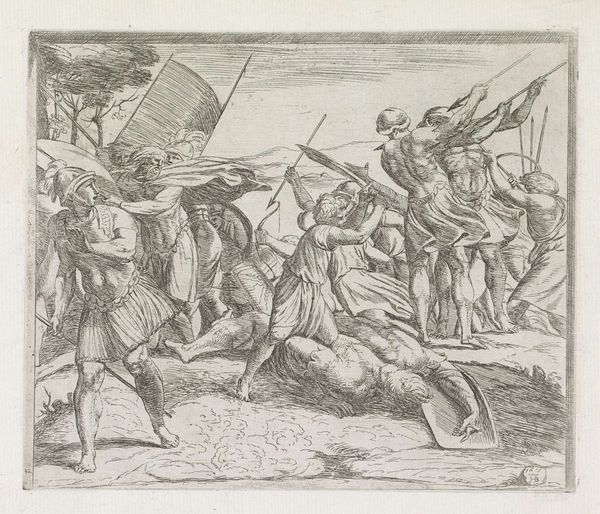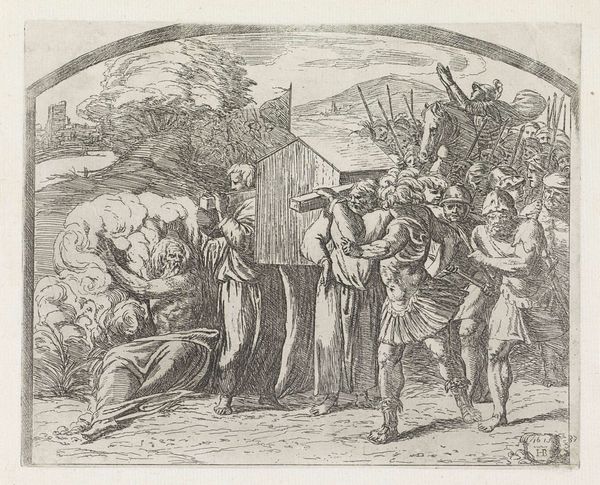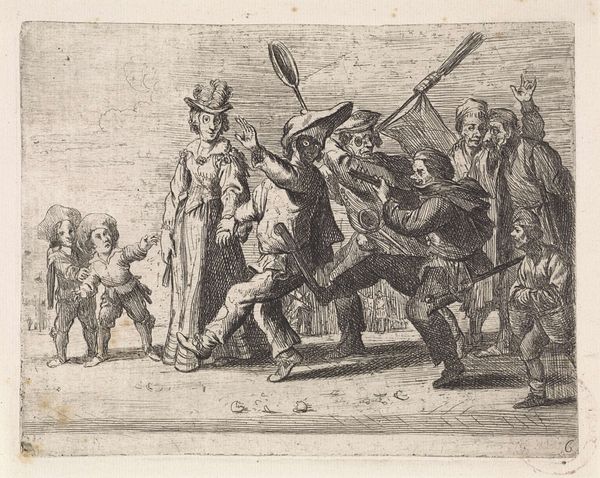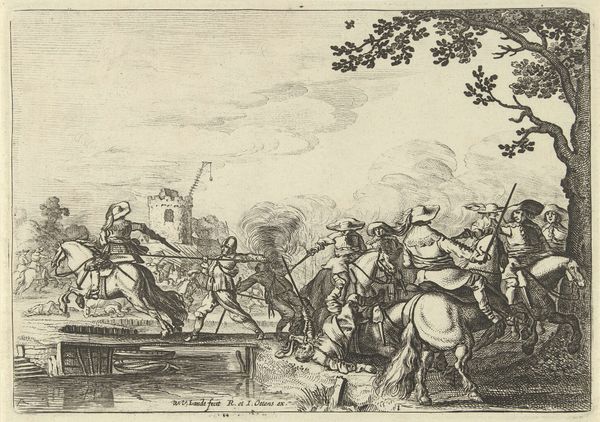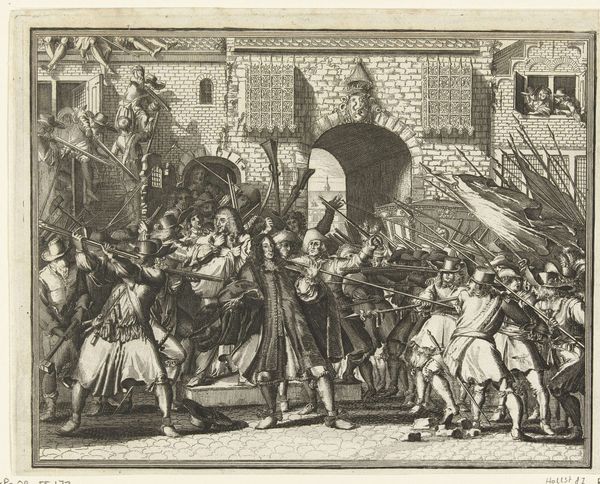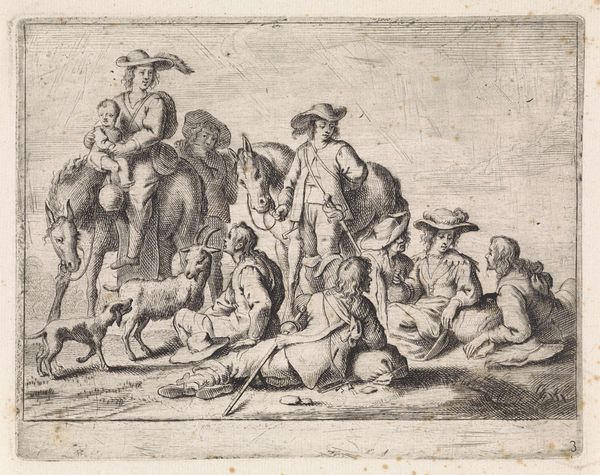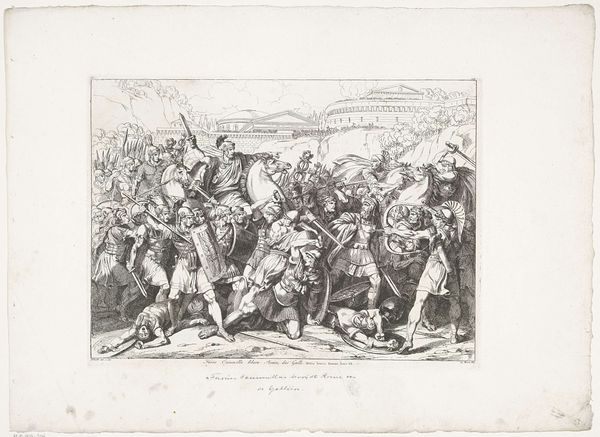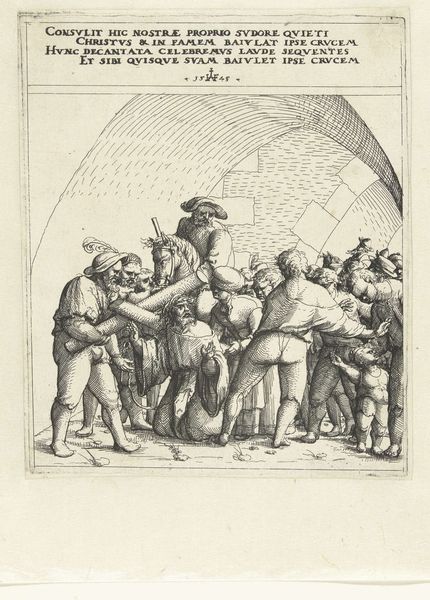
print, etching, engraving
#
baroque
# print
#
etching
#
figuration
#
history-painting
#
engraving
Dimensions: height 172 mm, width 216 mm
Copyright: Rijks Museum: Open Domain
Curator: This etching and engraving from around 1615, entitled "Val van Jericho," is attributed to Orazio Borgianni. You immediately notice, of course, the scene’s utter destruction. Editor: It’s so chaotic! Like a storm distilled onto this small printed surface. You can almost feel the reverberations of the crumbling walls and toppling structures through the lines. The etching style certainly contributes to the intensity. Curator: The print medium itself is significant. By this time, printed images were relatively accessible, and battle scenes were popular. So, what was once a unique drawing could be reproduced, disseminated, and even colored. And consider the labour involved: an artist physically manipulating these metal plates to create something that could then be reproduced on a printing press to quickly disseminate messages and shape public opinion. Editor: That accessibility is crucial. It connects the work directly to the politics and the social anxieties of the time. This biblical subject from the Old Testament illustrates a cautionary tale about the Israelites besieging the city. Beyond just religious interpretation, how did political authorities use the story of Jericho to demonstrate and justify power or to instill certain societal values, at a time when the notion of power was undergoing immense transformations throughout Europe? Curator: A critical component is how such prints could then be incorporated into books. Think of how the book trade and the art market more broadly functioned to facilitate the circulation of images and how that shapes the reception and understanding of the past in relation to contemporary power dynamics. This simple work on paper acted as a crucial mode of communication for Borgianni. Editor: It makes me consider what audiences made of this, especially those for whom literacy, or access to imagery in general, was relatively limited. How does seeing such widespread destruction play into feelings about political upheaval or impending conflict? Were they reminded that power—especially centralized authority—had real physical, destructive repercussions? Curator: Exactly. Borgianni is using accessible techniques like engraving to achieve something so nuanced. I leave this print with new respect for how artists, artisans, and socio-political conditions intersected to shape these visual narratives. Editor: And for me, it reveals how the simple act of producing and disseminating an image speaks volumes about the culture from which it emerged and continues to inform the collective historical understanding.
Comments
No comments
Be the first to comment and join the conversation on the ultimate creative platform.
